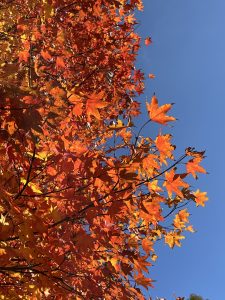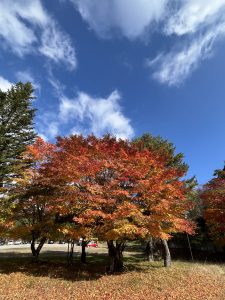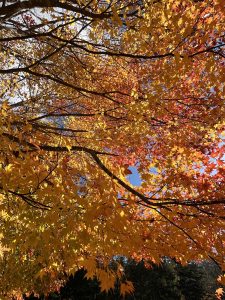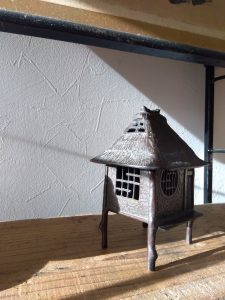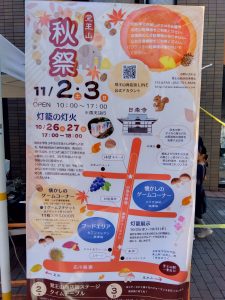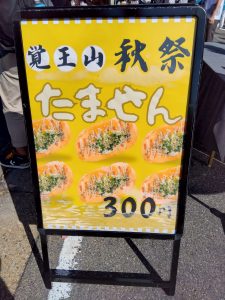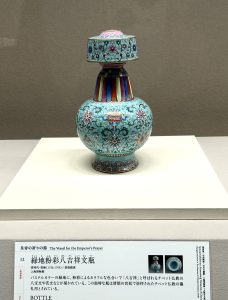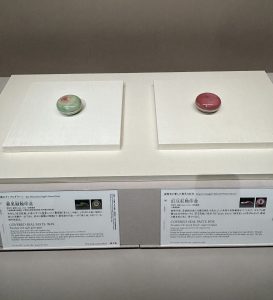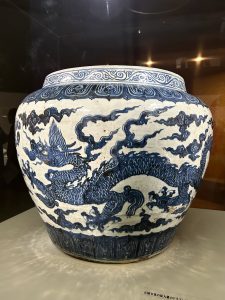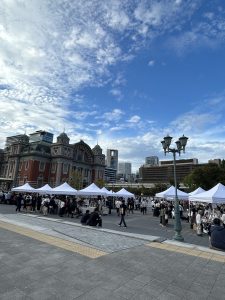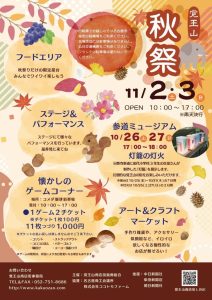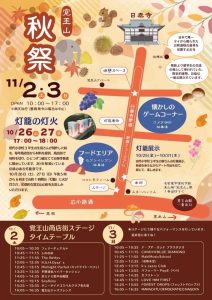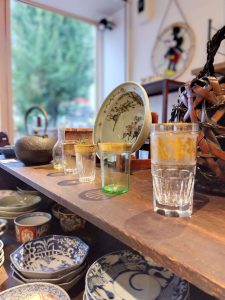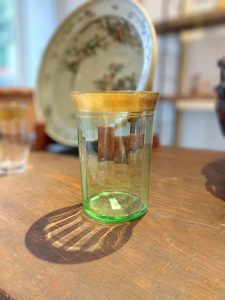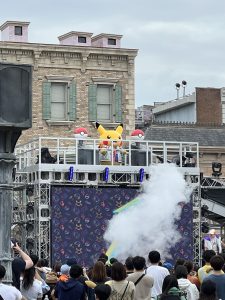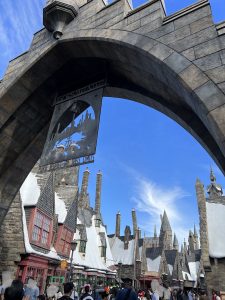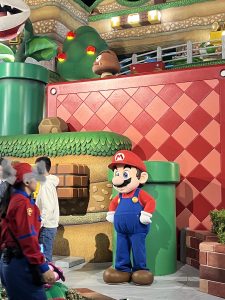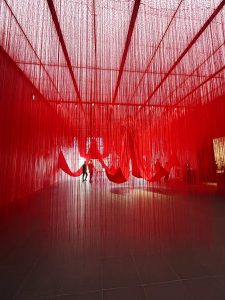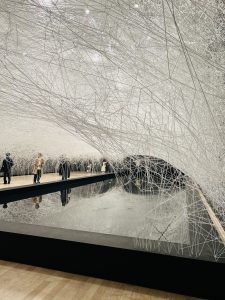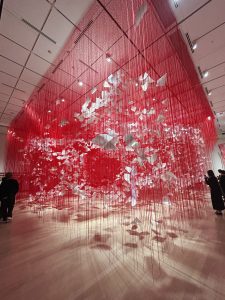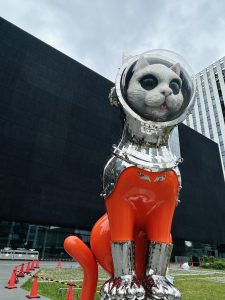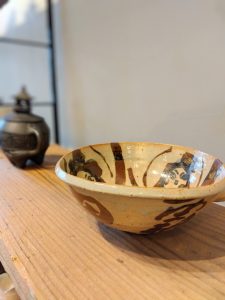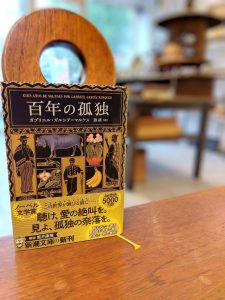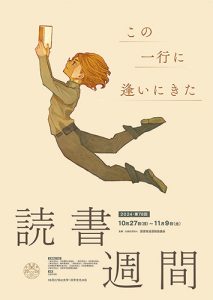紅葉の赤にも色々あります(愛知県名古屋市千種区姫池通 骨董買取 古美術風光舎)
2024.11.05
皆さまこんにちは。スタッフTでございます。
今日は曇り空のためか、室内でじっとしていると手先が冷たくなってきます。温かい飲み物が飲みたくなりますね。
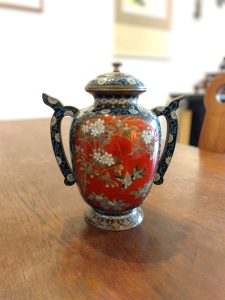
さて、昨日のスタッフYの紅葉の写真、とてもきれいでしたね。名古屋はまだまだ緑濃い木々ばかりで、紅葉が見られるのはずっと先のようです。予想では11月下旬頃のようですが、どうでしょう。
「もみじ」とは木の葉が色づくことをいいますが、もともとは草木染めで色を出すときに揉み出すことが語源になっています。
赤くなることを紅葉(こうよう)、黄色くなることも黄葉(こうよう)といい、いずれも「もみじ」とも読みます。
紅葉の写真でよく見かける「もみじ」を代表するのはカエデ類ですが、これは葉の形がカエルの手に似ていることからついた名前です。
紅葉は葉の色が赤や黄に色づくことにによって綺麗に見えますが、黄色は、キサントフィル類という色素で、若葉の頃から葉に含まれています。緑色の葉緑素がなくなるとよく見えるようになってくるのですが、赤色は、葉が本来もっている色ではありません。
木は、気温が下がると根は水を吸い上げる力がなくなるのですが、一方で空気は乾燥していきますので、木は葉から水分の蒸散を防ぐため葉と枝の境目に離層という仕切りを作ります。そのため水だけでなく栄養の行き来もなくなってしまいます。
ところが、葉はしばらく生きていているので、葉緑素が壊れるまでは栄養を作ります。葉が赤くなるのはこの葉にたまった栄養の糖がアントシアンという赤い色素に変わるためです。そのため葉に緑色の色素が残っているうちは、赤黒い色をしていますが、だんだん鮮やかな赤色に変わっていきます。
ちなみにイチョウの葉などが黄色くなるのは、葉にもともと含まれていたカロテノイドという色素が、クロロフィルが減って目立つようになるためです。
また同じ赤でも、真紅やサーモンピンク、オレンジなどさまざまな色の紅葉があるのは、木の種類によってつくられるアントシアニンの量が異なるためだと考えられています。
名古屋と言えば、手羽先やみそかつなどのご当地グルメが思い浮かびますが、「名古屋城」を筆頭に紅葉スポットもたくさんあります。他には「東山動植物園」や「白川庭園」、「徳川園」、名古屋市のお隣り瀬戸市にある「定光寺 定光寺公園」などがあります。名古屋市内からは少し遠いですが、国内有数の紅葉の名所として知られる香嵐渓(こうらんけい)もぜひ行ってみてほしいところです。
秋に名古屋を観光するなら、合わせてぜひ訪れてみてください。
ではでは、また。
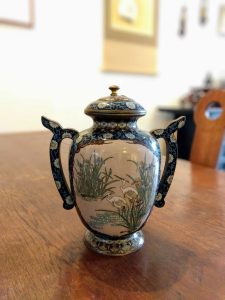
Hello everyone. This is Staff T.
Today is a cloudy day, and my hands are getting cold when I stay indoors. It makes me want to have a warm drink.
Yesterday, Staff Y’s photo of autumn leaves was very beautiful, wasn’t it? Nagoya is still full of thick green trees, and it seems that it will be a long time before we can see the autumn leaves. The forecast is for late November, but what do you think?
The word “momiji” refers to the coloring of leaves on trees, but the word originally comes from the process of rubbing out the leaves when dyeing them with plants and trees to bring out their colors.
Turning red is called koyo (紅葉) and turning yellow is called koyoyo (黄葉), both of which are also read as momiji (もみじ).
Maples, which are often seen in photos of autumn foliage, are representative of the maple family, so named because their leaves resemble frog hands.
The yellow color is a pigment called xanthophylls, which are present in the leaves from the time they are young. The red color is not the natural color of the leaf, although it becomes visible when the green chlorophyll is lost.
When the temperature drops, the roots of a tree lose their ability to absorb water, while the air becomes drier, so the tree creates a partition called a detachment layer at the border between the leaves and branches to prevent evaporation of water from the leaves. This causes not only water but also nutrients to cease to flow to and from the tree.
The leaves, however, remain alive for a while and produce nutrients until the chlorophyll is destroyed. The leaves turn red because the sugars in the nutrients stored in the leaves turn into a red pigment called anthocyanin. Therefore, while the green pigment remains in the leaves, they are reddish-black in color, but gradually turn bright red.
Incidentally, ginkgo leaves, for example, turn yellow when the chlorophyll in the leaves is reduced and the carotenoid pigment that was originally contained in the leaves becomes more prominent.
It is also believed that the reason why there are various colors of red leaves, such as crimson, salmon pink, and orange, is because the amount of anthocyanin produced differs depending on the type of tree.
When one thinks of Nagoya, local delicacies such as chicken wings and miso katsu (miso cutlet) come to mind, but there are also many places to enjoy autumn foliage, with Nagoya Castle at the top of the list. Other places to visit include Higashiyama Zoo and Botanical Garden, Shirakawa Garden, Tokugawa-en Garden, and Jokoji Jokoji Park in Seto City, a neighbor of Nagoya City. Although a bit far from Nagoya City, Korankei, known as one of the best places in Japan to view the autumn leaves, is also a must-see.
If you are planning to visit Nagoya in the fall, please be sure to combine your visit with a visit to Korankei.
See you soon.
*******************
ご実家の整理やお片付けなどをされている方のご相談などが多くございます。
お片付けなどくれぐれもご無理のないようになさってくださいませ。
風光舎では古美術品や骨董品の他にも絵画や宝石、趣味のお品など様々なジャンルのものを買受しております。
お片付けをされていて、こういうものでもいいのかしらと迷われているものでも、どうぞお気軽にご相談下さいませ。
また風光舎は、出張買取も強化しております。ご近所はもちろん、愛知県内、岐阜県、三重県その他の県へも出張いたします。
まずは、お電話お待ちしております。
愛知県名古屋市千種区姫池通
骨董 買取【古美術 風光舎 名古屋店】
TEL052(734)8444
10:00-17:00 OPEN
#出張買取#骨董#古美術#骨董品#絵画#版画#茶道具#刀剣#彫刻

